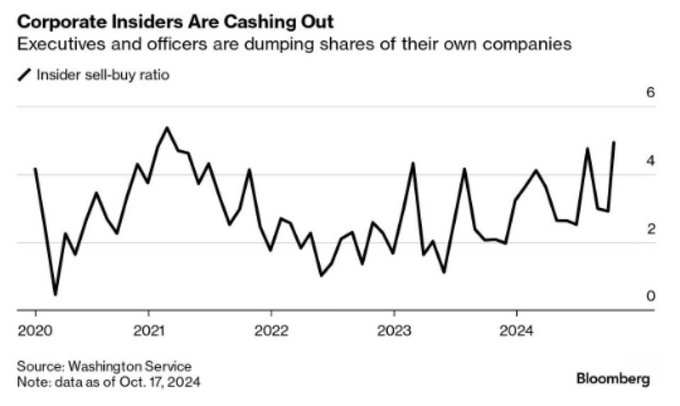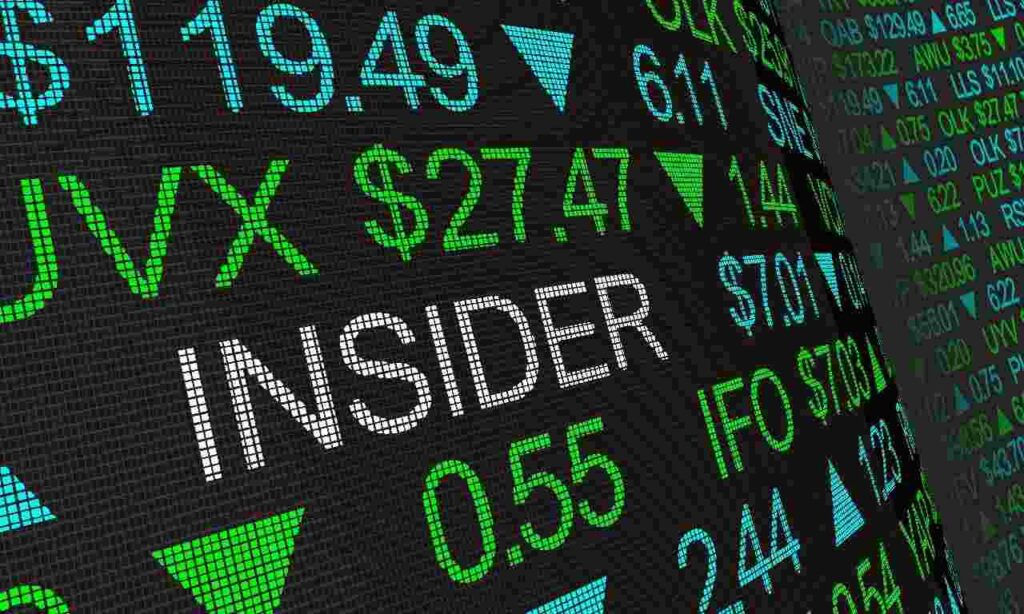Corporate insiders are offloading their shares at an accelerated rate, a trend that could raise alarms regarding the stock market’s health.
In particular, insiders, including executives, are selling shares of their companies at a rate not seen in over three years, according to Bloomberg data shared on November 15.
Receive Signals on SEC-verified Insider Stock Trades
This signal is triggered upon the reporting of the trade to the Securities and Exchange Commission (SEC).
Picks for you
Notably, the insider sell-buy ratio has surged to levels last observed in early 2021, marked by heightened market volatility.

This metric compares insider sales to purchases and highlights a notable trend of possible reduced confidence among corporate insiders regarding their companies’ near-term prospects.
Implication of increased insider sales
Not all insider sales are motivated by concerns about a stock’s overall health—some are due to personal financial planning. However, the timing is significant. Such activity often serves as a red flag for investors, suggesting potential challenges in earnings or broader market sentiment.
In recent months, Nvidia’s (NASDAQ: NVDA) CEO, Jensen Huang, has become a poster child for insider selling. Huang has sold over $700 million worth of Nvidia shares in 2024 under a pre-planned trading arrangement (10b5-1 plan), coinciding with a rally in the chipmaker’s stock to new highs, driven by its artificial intelligence breakthroughs.
Other notable insider sales have included those by Amazon (NASDAQ: AMZN) founder and executive chairperson Jeff Bezos.
Indeed, these sales have accelerated when the stock market has rallied, buoyed by the election of Donald Trump, who is considered bullish for equities. However, concerns remain that the current momentum might signal a possible crash.
Concerns of a possible market crash
Fears of market overvaluation further highlight the concerns of a possible market crash. In this case, the S&P 500 now accounts for 45% of the global economy’s size—a record high. This percentage has doubled, surpassing the 38% share recorded during the Dot-Com bubble peak.
The S&P 500’s rapid growth, driven by mega-cap tech giants like Nvidia, has sparked concerns about overvaluation.
Optimism around AI and digital innovation has fueled the surge, but higher interest rates and economic uncertainties, such as inflation, raise red flags. Critics caution that these valuations could be unsustainable despite strong corporate earnings.
At the same time, following the recent stock market rally, technical analyst Tom DeMark has warned that equities are nearing a top, pointing out that the current momentum mirrors the lead-up to the 1929 crash.
“The past two weeks’ rally has been on stilts and a sudden suspension of buying—even without selling pressure— could undercut the rally and transform into a sellers’ market. Granted good news could unlikely extend into inauguration but, at any time, once buying interest is interrupted, subsequent rallies should be short lived,” says DeMark.
Economist Henrik Zeberg has echoed similar concerns, warning that while the markets will likely see further surges, the worst economic crash may still lie ahead.
Featured image via Shutterstock






